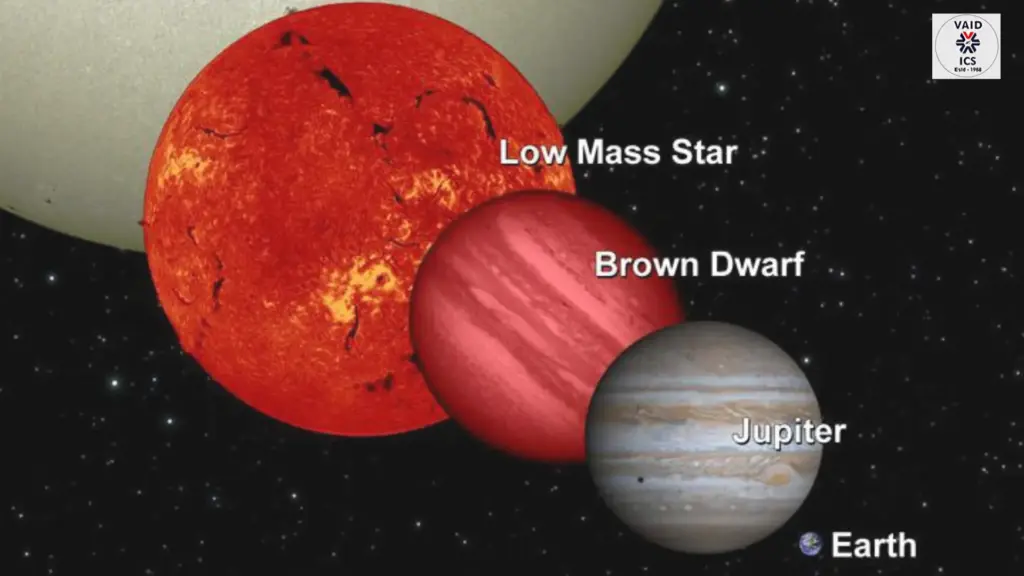August 28, 2025
What are Brown Dwarfs
Why in the News
A team of scientists has discovered a rare quadruple star system in the Milky Way, named UPM J040-3551 AabBab.
- It consists of a pair of low-mass brown dwarfs orbiting a pair of red dwarf stars, a configuration never seen before.
- The findings were published in the Monthly Notices of the Royal Astronomical Society.
What are Brown Dwarfs :
- Brown dwarfs are astronomical objects that are bigger than planets yet smaller than stars.
- They form like stars (from collapsing gas and dust) but lack sufficient mass to sustain nuclear fusion like normal stars.
- They have atmospheres similar to gas giants such as Jupiter and Saturn.
- Their mass range is 13–80 times Jupiter’s mass, but less than required to ignite hydrogen fusion.
Why are Brown Dwarfs Difficult to Detect :
- They are cool and faint, emitting little visible light.
- Often similar in size to Jupiter, making them hard to distinguish.
- Require advanced telescopes and infrared techniques for detection.
Why do Scientists Study Brown Dwarfs :
- Help understand the boundary between stars and planets.
- Provide insights into star formation conditions.
- Improve knowledge of mass distribution in the galaxy and the universe’s hidden mass.
- Studying them refines models of stellar evolution and planetary systems.
About Quadruple Star System:
A rare quadruple star system is a stellar system where four stars are bound together by gravity and orbit each other in a complex but stable configuration. Such systems are very rare compared to binary or triple star systems.
Key Features of a Quadruple Star System:
- Two pairs of binaries: Usually, quadruple systems consist of two close binary stars (two stars orbiting each other) that in turn orbit around a common center of mass.
- Gravitational Stability: Despite the complexity, such systems can remain stable for billions of years if the distances between the stars are well balanced.
- Light & Spectra: Their overlapping brightness often makes them difficult to detect; astronomers rely on changes in light curves and spectroscopic observations.
Example:
- HD 98800 System: Located about 150 light-years away in the constellation TW Hydrae, it has two pairs of binary stars orbiting each other.
- ADS 9716: A well-studied quadruple system consisting of two binaries in mutual orbit.
- In 2022, researchers also identified a rare quadruple system where stars could eventually merge to produce powerful gravitational wave events.
Significance:
- Stellar Evolution: They provide insights into how stars form and evolve in groups.
- Gravitational Wave Sources: Close binaries in such systems can eventually spiral together, leading to neutron star or black hole mergers.
Planetary Systems: Studying them helps us understand whether planets can survive or form in such complex multi-star environments.
October 6, 2025
September 24, 2025
September 23, 2025
September 22, 2025

